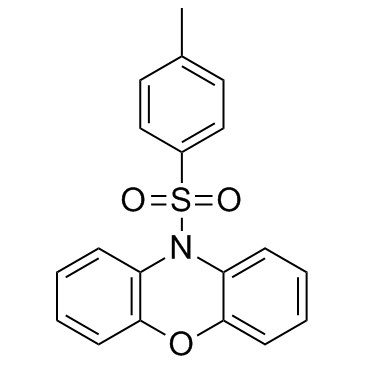| Description |
PSB-12062 is a potent and selective P2X4 antagonist with an IC50 of 1.38 μM for human P2X4.
|
| Related Catalog |
|
| Target |
IC50: 1.38 μM (human P2X4), 92.8 nM (rat P2X4), 1.76 μM (mouse P2X4)[1]
|
| In Vitro |
PSB-12062 shows similar potency in human, rat, and mouse species. PSB-12062 shows to be allosteric in nature with a 35-fold selectivity toward P2X4 versus P2X1, P2X2, P2X3, and P2X7. However, PSB-12062 is unable to completely block ATP-induced P2X4-mediated calcium influx even when used at high concentrations (>30 μM)[1].
|
| Kinase Assay |
The competition binding studies are performed in assay buffer (50 mM Tris-HCl, pH 7.4) containing 1 mM EDTA and 0.2 nM [35S]ATPγS. The incubations are started by the addition of membranes (10-15 μg) and are performed in a 250 μL final assay volume. The reactions are terminated by vacuum filtration over GF/ B glass-fiber filters using a Brandell 48-well harvester. The filters are rinsed three times with ice-cold Tris-HCl buffer (50 mM, pH 7.4). The filters are punched out and transferred to 4 mL scintillation vials. Then 2.5 mL of Ultima Gold scintillation cocktail is added, and samples are counted after 6 h for 1 min each, using a liquid scintillation counter (LSC). Nonspecific binding of [35S]ATPγS is determined using 100 μM ATP[1].
|
| References |
[1]. Hernandez-Olmos V, et al. N-substituted phenoxazine and acridone derivatives: structure-activity relationships of potent P2X4 receptor antagonists. J Med Chem. 2012 Nov 26;55(22):9576-88. [2]. Stokes L, et al. P2X4 Receptor Function in the Nervous System and Current Breakthroughs in Pharmacology.Front Pharmacol. 2017 May 23;8:291.
|

